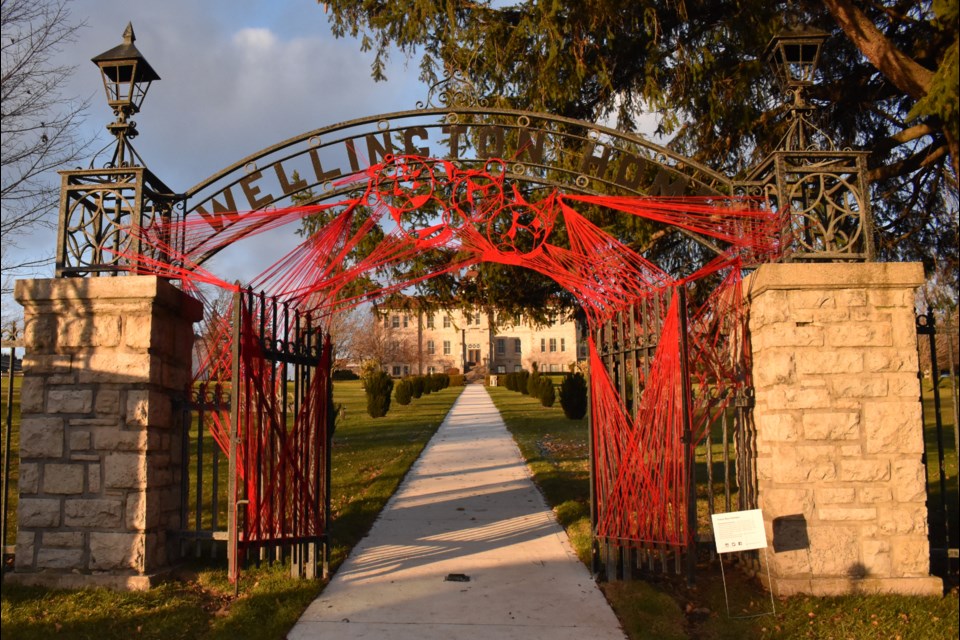ABOYNE – An art piece at the Wellington County Museum and Archives’ (WCMA) gates is meant to question the connection between Indigenous people and settlers in the context of today’s world.
Métis artist Tracey-Mae Chambers’ #hopeandhealingcanada art installation has made its way all over Canada and recently was put up at the WCMA entrance gate at the bottom of the hill at Wellington Place.
The installation is created with knitted and crocheted red yarn — with an artist statement noting red represents blood, passion, anger, danger, power, a slur against Indigenous peoples, courage and love.
Chambers said in an interview the piece originally was meant to illustrate reconnecting after COVID but it has become more.
“It’s sort of morphed into something that addresses decolonization, more so than reconnection after COVID, just because the social climate has changed in the last couple months,” Chambers said, specifically referring to the discovery of unmarked graves at residential schools.
“Yes, it’s about reconnecting after COVID but it’s also questioning whether or not there’s a connection at all between Indigenous communities and settler Canadians.”
The art installation has made its way to many public spaces across the country — enough that Chambers has lost count — with the specific purpose of decolonizing public spaces and bringing an Indigenous voice to them.
“They walk through there (museum) and they don’t see themselves reflected in what is contained within that museum or many of the museums throughout Canada. It’s based upon a European person’s history,” Chambers said.
Hailey Johnston, WCMA curator, said in a phone call Chambers reached out over the summer proposing this exhibit, something the museum gets a lot but this kind of request for an outdoor temporary exhibit might be a first.
She explained they worked with Chambers to find the right time and place for the exhibit and settled on the front gate.
This spot has significance because this is where the community created a spontaneous shoe memorial after the discovery of the first mass grave at a former residential school.
“That showed museum staff that it’s a point on our property that the community already sees as a meaningful place to gather,” Johnston said, adding it’s also on a widely used trail network. “Where Tracey-Mae placed her art, trail users have to walk directly underneath it, so you kind of can’t miss it. It’s at the museum but it’s also in the community at large as well.
Chambers said she hopes people who view the art installation see places such as the WCMA from a more Indigenous perspective, figuratively and literally when looking through the circles in the design..
“You’re looking at that museum through an Indigenous lens,” Chambers said. “How can it be possible for people to step outside themselves for a brief period of time and look at the world through an Indigenous lens.”
#hopeandhealingcanada will be at the museum gates until Nov. 29.



